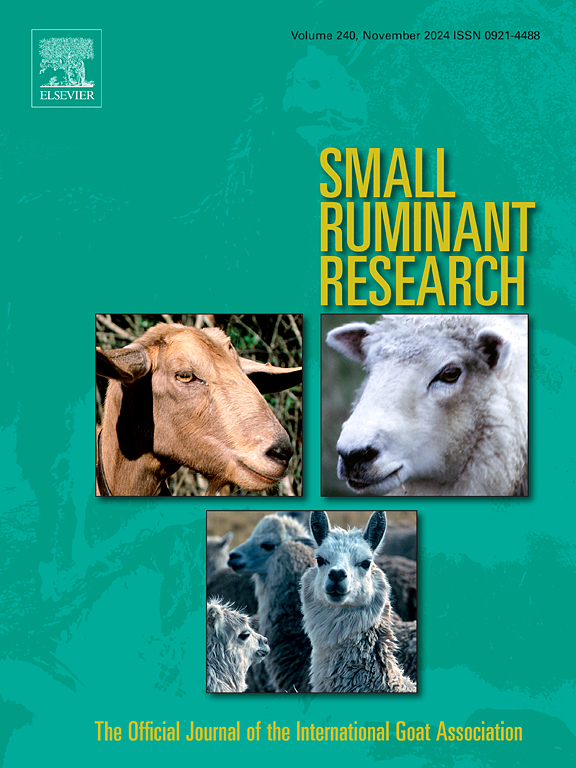ⅰ类小热休克蛋白在热应激山羊心脏细胞中的转录丰度及细胞保护作用
IF 1.6
3区 农林科学
Q2 AGRICULTURE, DAIRY & ANIMAL SCIENCE
引用次数: 0
摘要
本研究旨在记录I类小热休克蛋白(HSPs)在热应激山羊心脏细胞中的转录丰度和细胞保护作用。从山羊不同心脏组织(n = 6)中分离心肌细胞,进行心肌细胞原代培养。培养72 h后,原代心肌细胞达到75-80 %的融合。此外,融合心肌细胞在42 °C下暴露于0(对照)、20、60、100和200 min。HSPB1的转录丰度在20 min时没有变化,在60 ~ 200 min时表达上调(P <; 0.05),在200 min时表达最高。HSPB5和HSPB8的转录丰度在20和60 min时没有变化,在100和200 min时显著增加,在200 min时转录丰度最高。HSPB6的转录丰度仅在200 min时升高。Caspase-3的转录丰度在200 min时显著降低。因此,推测I类小热休克蛋白在不同热应激持续时间的转录丰度差异可能维持热应激期间心肌细胞的稳态是合乎逻辑的。此外,I类小热休克蛋白的最高转录可能在热应激200 min时下调了Caspase-3的转录丰度,这表明它们对热应激山羊心脏细胞具有细胞保护作用。本文章由计算机程序翻译,如有差异,请以英文原文为准。
Transcriptional abundance and cyto-protective action of class I small heat shock proteins in heat stressed caprine cardiac cells
The present study was aimed to document the transcriptional abundance and cyto-protective action of class I small heat shock proteins (HSPs) in heat stressed caprine cardiac cells. Cardiac cells were isolated from different heart tissues (n = 6) of goats and primary cardiac cells culture was done. Primary cardiac cells achieved 75–80 % confluence after 72 h of incubation. Further, confluent cardiac cells were exposed to heat stress at 42 °C for 0 (control), 20, 60, 100 and 200 min. Transcriptional abundance of HSPB1 did not change at 20 min, up-regulated (P < 0.05) from 60 to 200 min and registered highest at 200 min of heat stress. Transcriptional abundance of HSPB5 and HSPB8 did not vary at 20 and 60 min and then significantly increased at 100 and 200 min with highest transcription at 200 min of heat stress. Transcriptional abundance of HSPB6 was elevated only at 200 min of heat stress. Transcriptional abundance of Caspase-3 was significantly decreased at 200 min of heat stress. Therefore, it is logical to speculate that differential transcriptional abundance of class I small HSPs at different durations of heat stress might maintain cardiac cell homeostasis during heat stress. Moreover, highest transcription of class I small HSPs might have down-regulated the transcriptional abundance of Caspase-3 at 200 min of heat stress suggesting their cyto-protective action on heat stressed caprine cardiac cells.
求助全文
通过发布文献求助,成功后即可免费获取论文全文。
去求助
来源期刊

Small Ruminant Research
农林科学-奶制品与动物科学
CiteScore
3.10
自引率
11.10%
发文量
210
审稿时长
12.5 weeks
期刊介绍:
Small Ruminant Research publishes original, basic and applied research articles, technical notes, and review articles on research relating to goats, sheep, deer, the New World camelids llama, alpaca, vicuna and guanaco, and the Old World camels.
Topics covered include nutrition, physiology, anatomy, genetics, microbiology, ethology, product technology, socio-economics, management, sustainability and environment, veterinary medicine and husbandry engineering.
 求助内容:
求助内容: 应助结果提醒方式:
应助结果提醒方式:


